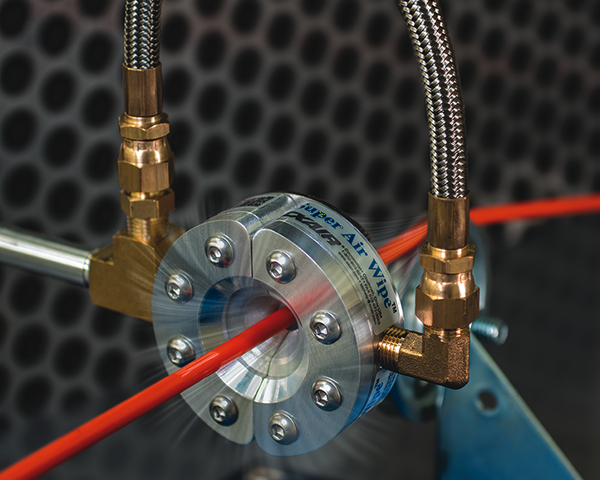Antistatic Ion Generating Bar - Ionizing Bar Exair Gen 4
Compact and robust design for static elimination in industrial environments.
- Low cost option for static elimination!
- No compressed air required for operation!
- Charge dissipation power up to ±5 kV!
- Effective up to 5 cm distance from the target!
Description
What is the Exair Ionizing Bar?
The EXAIR Ionizing Bar eliminates electrostatic charges on non-conductive material surfaces such as paper, plastic films and fabrics. Static can attract dust and other contaminants, ruin product appearance, cause clogging of production machines.
The Exair Ionizing Bar is compact, allowing it to be mounted in confined spaces, close to where the charge is generated. A high concentration of positively and negatively charged ozone ions facilitates neutralization of any surface within 5 centimeters.
The unique design of the ionizing rod is safe to use as there is no risk of electric shock. It offers improved performance and reliability in industrial applications. This is the fourth generation of Exair's antistatic products and they are the most robust iteration ever.
Applications
Labeling
Bag making - form and fill
Shrink wrap neutralization
Sheet and web presses
Packaging
Converting machinery
Neutralizing slitting operations
Textile and Screen Printing
Advantages
Significantly improved performance when placed 2″ or closer to a surface.
Able to minimize static charge from up to 4″ away
Rugged shielded and electromagnetically shielded wire rope
Integrated ground connection eliminates additional grounding
Durable stainless steel connections to Power supply.

How does the Exair Ionizing Bar work?

The shielded power cable (1) carries the 5kV (rms) from the power supply output to each of the stainless steel emitter points (2) of the Exair Ionizing Bar. A grounding wire (3) on the side of the bar creates a discharge path from the emitter points to the bar channel (4). The discharge at each emitter charges the molecules of the surrounding atmospheric air gases, resulting in a shower of negatively and positively charged ozone ions (5). If the material has a negatively charged surface, it will attract the positive ions on the rod and the charge will be neutralized. If the material has a positively charged surface, it will attract negative ions from the rod and the charge will be neutralized. The voltage potential of each emitter is high enough to ionize the surrounding air without risk of electric shock when any of the emitters is touched by hand.
Dimensional Diagram

Specifications

| Distance from the loaded surface | |||
|---|---|---|---|
| 0.50″ (13mm) | 1″ (25mm) | 2″ (51mm) | |
| Time to dissipate 5 kV (seconds) | 0.12 | 0.18 | 0.30 |




































